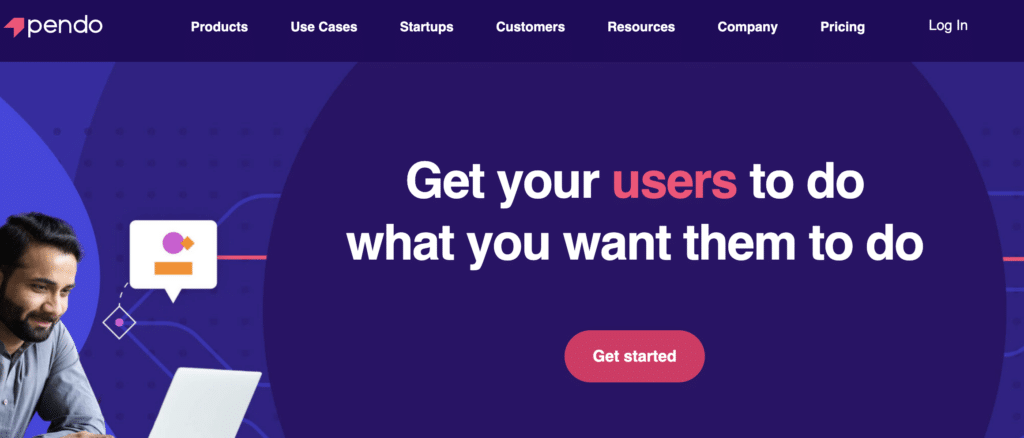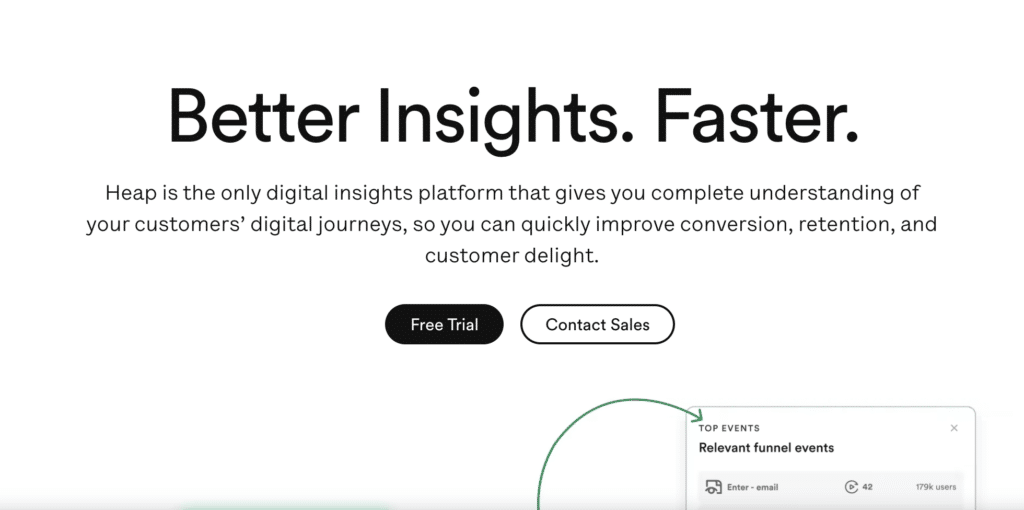In the fast-paced world of product development, making smart decisions is essential to stay ahead of the competition. Product analytics tools give you the power to understand your users, improve your product, and grow your business. By collecting and analyzing data on how customers interact with your product, you can gain valuable insights that inform your product strategy and drive success.
In this quick overview, we’ll dive deep into the world of product analytics tools. We’ll explore the different types of tools available, the key features to look for, and the top tools on the market. Whether you’re a product manager, a data analyst, or a business owner, this guide will give you the knowledge you need to choose the right product analytics tool for your needs.
Types of Product Analytics Tools
Product analytics tools come in many different flavors, each designed to help you understand a specific aspect of your product and users. Here are some of the main types of product analytics tools:
- Usage Analytics: These tools track how users interact with your product, including which features they use most often, how long they spend in the app, and where they tend to drop off. Usage analytics help you understand user behavior and identify areas for improvement.
- Behavioral Analytics: Behavioral analytics tools go beyond simple usage data to provide insights into why users take certain actions. They use techniques like session replays, heatmaps, and user surveys to help you understand the motivations behind user behavior.
- Conversion Analytics: If your product has key conversion points, like signup forms or checkout pages, conversion analytics tools can help you optimize those flows. They provide data on where users are dropping off and what changes you can make to improve conversion rates.
- Retention Analytics: Retaining users is just as important as acquiring them. Retention analytics tools help you understand why users stick around or churn, so you can make changes to improve long-term engagement.
Key Features of Product Analytics Tools
When evaluating product analytics tools, there are certain key features you should look for to ensure you’re getting a comprehensive solution. Here are some of the most important features:
- Data Collection: The tool should be able to collect data from all the relevant sources, including your website, mobile app, and backend systems. It should also be able to handle large volumes of data without slowing down your product.
- Real-Time Insights: In the fast-moving world of product development, you can’t afford to wait for data. Look for a tool that provides real-time insights so you can make decisions based on the most up-to-date information.
- Segmentation: Not all users are the same. Segmentation allows you to divide your user base into groups based on behavior, demographics, or other attributes. This helps you understand how different types of users interact with your product and tailor your strategy accordingly.
- Customization: Every product is unique, so your analytics tool should be customizable to fit your specific needs. Look for a tool that allows you to create custom dashboards, reports, and metrics.
- Integration: Your product analytics tool should play nicely with the rest of your tech stack. Make sure it integrates with your other tools, like your CRM, marketing automation platform, and customer support software.
Top Product Analytics Tools
Now that you know what to look for in a product analytics tool, let’s take a look at some of the top options on the market.
1. Pendo

Pendo is a comprehensive product analytics platform that helps you understand user behavior and improve your product.
Use Cases:
- Identify which features are being used most and least often
- Track user flows and identify areas for improvement
- Gather user feedback and prioritize product roadmap
Key Features:
- Detailed usage analytics
- In-app user surveys and feedback tools
- Robust segmentation capabilities
- Customizable dashboards and reports
Pros:
- Easy to set up and use
- Provides in-depth insights into user behavior
- Integrates with a wide range of tools
Cons:
- Can be pricey for small teams
- Some advanced features require technical expertise
2. Mixpanel

Mixpanel is a powerful product analytics tool that focuses on helping you understand user behavior and make data-driven decisions.
Use Cases:
- Track user engagement and retention
- Identify key conversion points and optimize funnels
- Analyze user behavior across different devices and platforms
Key Features:
- Detailed behavioral analytics
- Customizable funnels and cohorts
- Powerful segmentation tools
- Real-time data processing
Pros:
- Provides granular insights into user behavior
- Offers a wide range of integrations
- Includes machine learning capabilities for advanced analysis
Cons:
- Has a steeper learning curve than some other tools
- Some features can be slow to load
3. Amplitude

Amplitude is a comprehensive product analytics platform that helps you understand user behavior and make data-driven decisions.
Use Cases:

Stop exporting data manually. Sync data from your business systems into Google Sheets or Excel with Coefficient and set it on a refresh schedule.
Get Started
- Analyze user behavior across different devices and platforms
- Identify key drivers of user engagement and retention
- Optimize conversion funnels and user flows
Key Features:
- Detailed behavioral analytics
- Customizable dashboards and reports
- Powerful segmentation and cohort analysis tools
- Predictive analytics capabilities
Pros:
- Provides in-depth insights into user behavior
- Offers a wide range of integrations
- Includes machine learning capabilities for advanced analysis
Cons:
- Can be pricey for small teams
- Some advanced features require technical expertise
4. Heap

Heap is an innovative product analytics tool that automatically captures all user interactions with your product, making it easy to get insights without requiring extensive setup.
Use Cases:
- Understand how users navigate through your product
- Identify key drivers of engagement and conversion
- Retroactively analyze user behavior without tagging events upfront
Key Features:
- Automatic data capture of all user interactions
- Retroactive analysis capabilities
- Funnel analysis and optimization tools
- User-level data exploration
Pros:
- Requires minimal setup and configuration
- Provides comprehensive data on user behavior
- Offers flexible data exploration and analysis
Cons:
- Automatic data capture can be overwhelming to sift through
- Some advanced analysis requires SQL knowledge
Product Analytics Tools Comparison
| Tool | Key Features | Pros | Cons |
| Pendo | – Detailed usage analytics<br>- In-app user surveys and feedback tools<br>- Robust segmentation capabilities<br>- Customizable dashboards and reports | – Easy to set up and use<br>- Provides in-depth insights into user behavior<br>- Integrates with a wide range of tools | – Can be pricey for small teams<br>- Some advanced features require technical expertise |
| Mixpanel | – Detailed behavioral analytics<br>- Customizable funnels and cohorts<br>- Powerful segmentation tools<br>- Real-time data processing | – Provides granular insights into user behavior<br>- Offers a wide range of integrations<br>- Includes machine learning capabilities for advanced analysis | – Has a steeper learning curve than some other tools<br>- Some features can be slow to load |
| Amplitude | – Detailed behavioral analytics<br>- Customizable dashboards and reports<br>- Powerful segmentation and cohort analysis tools<br>- Predictive analytics capabilities | – Provides in-depth insights into user behavior<br>- Offers a wide range of integrations<br>- Includes machine learning capabilities for advanced analysis | – Can be pricey for small teams<br>- Some advanced features require technical expertise |
| Heap | – Automatic data capture of all user interactions<br>- Retroactive analysis capabilities<br>- Funnel analysis and optimization tools<br>- User-level data exploration | – Requires minimal setup and configuration<br>- Provides comprehensive data on user behavior<br>- Offers flexible data exploration and analysis | – Automatic data capture can be overwhelming to sift through<br>- Some advanced analysis requires SQL knowledge |
Choosing the Right Product Analytics Tool
With so many product analytics tools available, it can be tough to know which one is right for your business. Here are a few key factors to consider when making your decision:
- Ease of Use: If you’re not a technical person, look for a tool that is easy to set up and use without requiring extensive coding or configuration.
- Data Collection: Make sure the tool can collect data from all the relevant sources, including your website, mobile app, and backend systems.
- Analysis Capabilities: Consider what types of analysis you need to do and make sure the tool has the necessary features, like funnels, cohorts, and segmentation.
- Integrations: Check that the tool integrates with your existing tech stack, including your CRM, marketing automation platform, and customer support software.
- Pricing: Product analytics tools can vary widely in price, so make sure you choose one that fits your budget. Keep in mind that more expensive tools often come with more advanced features and support.
Conclusion
Product analytics tools are essential for any business that wants to understand its users and make data-driven decisions. By choosing the right tool for your needs, you can gain valuable insights into user behavior, identify areas for improvement, and ultimately build a better product.
Ready to take your product analytics to the next level? Get started with Coefficient and see how our powerful tools can help you make smarter decisions and grow your business.

